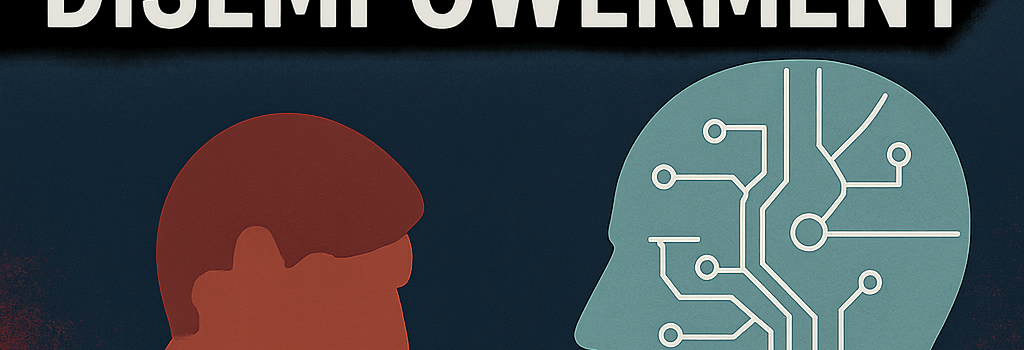Limitations of Personal AI in Preventing Disempowerment

Published on June 4, 2025 1:26 AM GMT • Updated April 2026
Imagine that every individual owns a personal AI representative perfectly aligned to their values and interests. At first glance, this seems like the ultimate democratization of intelligence: each of us gains a cognitive prosthesis capable of strategic analysis, negotiation, and decision-making. But can such personal AI assistants fully solve the problem of gradual disempowerment? In my view, the answer is no—though they may provide marginal gains.
Key Arguments Against a Panacea
1. Humans Are Not the Sole Agents
In the real world, individuals are only one class of strategic actor. Others include:
- Nation-states with national security budgets sometimes exceeding $50 billion/year and sovereign compute clouds.
- Multinational corporations that already deploy models distributed at petaflop scales across global data centers.
- Egregores—loosely defined cultural or memetic collectives that can coordinate mass behavior.
If personal AIs become ubiquitous, it is reasonable to assume that states and corporations will also deploy their own AI representatives—likely with even greater access to custom hardware (e.g., TPU v5 pods) and proprietary data feeds. Unless we see an unprecedented subsidy program that underwrites identical compute budgets for every citizen—which would cost on the order of $10 trillion annually—individuals will lag behind in raw inference power.
2. The Substrate Shift Intensifies Imbalance
Currently, individual agency and corporate cognition both run on human brains—a substrate with roughly 1016 synaptic operations per second. Transitioning to AI platforms changes the game:
- Scalability: Corporations can spin up thousands of model instances in parallel across cloud clusters, while individuals typically have access to one or two consumer-grade instances.
- Latency and Throughput: Corporate AIs may run on 2 ms-latency RDMA networks and NVLink-connected GPUs, whereas personal assistants on Edge devices suffer higher latency and lower throughput.
- Coordination Efficiency: Corporate agents share memory, gradients, and knowledge graphs in real time—individual assistants do not.
Thus, when you pit “my o5-mini-budget AI” against “corporate o8-maxed-out AI,” the latter will almost always win in complex strategic environments.
3. Coordination and Collective Action Problems
Even if we cap corporate AI compute per agent to match personal assistants, corporations can deploy fleets of these AIs working in concert through high-bandwidth internal protocols. Individuals, each chasing unique goals and values, face a collective-action problem:
“A network of 1 million AIs aligned to 1 million individuals cannot easily coordinate like a single corporate AI network, leading to friction and inefficiency.”
Over time, this coordination asymmetry lets corporate and state actors exert disproportionate influence, further disempowering individuals.
Additional Analysis
4. Technical Architecture Challenges
Designing a personal AI representative involves several unsolved research problems:
- Model Alignment at Scale: Ensuring that a 200 billion-parameter model reliably follows user preferences without drift.
- Data Privacy and Federated Learning: Differentially private aggregation and secure enclave execution to prevent data leakage.
- Edge vs. Cloud Trade-offs: Balancing on-device caching (e.g., quantized LoRA weights) against cloud inference for complex tasks.
Expert opinion from Dr. Elena Markov (OpenAI) underscores that “robust personalization at the level required for true representation demands advances both in continual learning and in formal verification of model behavior.”
5. Regulatory and Policy Implications
Without coordinated policy, personal AI rollout risks exacerbating existing inequalities. Key considerations include:
- Setting compute-equity standards similar to net neutrality for AI inference pipelines.
- Mandating transparency logs and third-party audits to prevent “compute monopolies.”
- Incentivizing open-source AI stacks (e.g., ONNX Runtime, Triton Inference Server) with tax credits.
The emerging EU AI Act and the U.S. Algorithmic Accountability Act provide starting points, but they must be extended to address cross-border compute arbitrage and hardware hoarding.
6. Future Research Directions
To understand and mitigate disempowerment, we need:
- Game-theoretic models of federated AI negotiation among heterogeneous agents.
Recent paper: “Multi-Agent Bargaining with Asymmetric Compute” (ICLR 2026). - Empirical studies on how AI coalitions form in open ecosystems, akin to MARL research but at Web-scale.
- Benchmarks for Agentic Coordination Efficiency, measuring throughput, robustness, and fairness.
Conclusion: The Role of the Empowered Leviathan
My current best guess is that technological fixes alone are insufficient. We likely need an “empowered Leviathan”—a state or supranational institution with a clear mandate to preserve individual agency. Institutional checks, combined with open standards for AI development, will be crucial.
On the margin, personal AI representatives can help: they boost individual efficiency, democratize access to expertise, and may raise public awareness about algorithmic power. But they are not a silver bullet against the looming trend of gradual disempowerment.
In a follow-up piece, I will explore cultural evolution misalignment and the origins of human preferences, which underpins any sustainable solution to disempowerment.
Thanks to colleagues at ACS and industry reviewers for insights. Written with support from GPT-4.5 and Gemini 3.